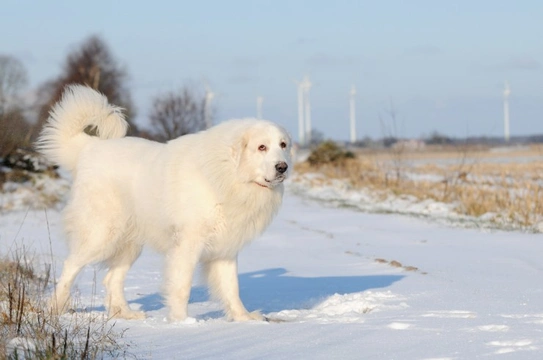
Six breeds of dog that thrive in cold weather
Some dog owners virtually have to use a stick and carrot to convince their dogs to go outside when the weather gets a little cold or rainy, while others really thrive in cold weather and will think nothing of going out in the middle of a snow storm to hare around and have fun!
This is because every dog breed is of course different, and those that hail from warmer or more temperate climates, or that have been selectively bred, may have a thin coat, not much body fat, and a range of other factors that make them poorly suited to cold days.
Other dogs, on the other hand, may originate from colder areas that require a thick coat, lots of insulation and other factors to help protect them from bad weather, and will not only cope, but thrive in some of the coldest places on earth. One of these breeds is the Siberian husky-and we covered exactly why the Siberian husky is so well suited to cold weather in this previous article-but they are by no means the only one!
In this article, we will look at six other breeds of dog that thrive in bad weather, and why!
This information may be useful to people who live in particularly cold areas, want to keep their dogs outside in a kennel, or otherwise want a cold weather, hardy breed! Read on to learn more.
Alaskan malamute
The Alaskan malamute is, like the Siberian husky, a dog from the spitz grouping, and many spitz dogs are really well built to handle very cold weather! The Alaskan malamute has a dense coat with more than one layer, which protects against the rain and wind, while providing a thick, dense layer of insulation to retain heat. They are also very economical to run, in dog terms-the malamute can get a lot of energy out of their food and keep on slogging along even through the worst Alaskan weather.
Japanese Akita
Japan might not be somewhere that we think of being a particularly cold country, but they do have harsh winters, particularly in the mountainous regions where the Akita really comes into their own.
A large, strong breed that makes for a great guard dog or watch dog, the Akita can live in kennels or outbuildings outside quite comfortably all through the year, and won’t be phased by the odd puddle!
Chow Chow
The Chow Chow breed originates from China, and is yet another spitz type dog that is worthy of noting as being particularly cold hardy! This breed is most well known for having an unusual blue-black tongue, that makes them look like they’ve eaten a packet of Blackjacks every time they open their mouths!
They are also instantly recognisable due to their appearance of looking like a large, really fluffy teddy bear, with a thick insulating coat to keep them warm.
They also have fairly narrow eyes and lots of fur on their faces, to protect them from driving rain and snow.
Caucasian shepherd dog
The Caucasian shepherd dog (known in some countries as the Ovcharka) hails from the former Eastern Bloc countries such as Armenia, Georgia and Russia. Their history is a long and storied one, with their ancestors being traced back to the most ancient of all natural dog breeds, and they have evolved and adapted to suit harsh winters and unpalatably cold weathers!
Nothing that the worst of the British winters can throw at the breed will phase them, and if you are looking for a dog that can have an outside kennel or still be up for a walk when the weather is freezing, this is the dog for you!
American Eskimo dog
The American Eskimo dog is not actually an American (or Inuit) dog at all-they are actually a German breed, once more from the spitz grouping. However, anti-German sentiment in the wake of WW2 saw the breed undergo something of a rebranding to avoid the effects of this, leading to the new name!
American Eskimo dogs are snow white, fluffy dogs with very thick fur, once again to offer them superior protection from the elements.
Pyrenean mountain dog
The Pyrenean mountain dog hails from France, and like most dog breeds that come with the “mountain dog” moniker, they are large, hefty and capable of holding their own in cold mountainous weather.
Even when the weather across the rest of the nation is mild, mountain regions within Europe can still be cold and inhospitable, which means that dogs from these areas need to be cold hardy and sure footed, to both thrive and survive in the cold!
They are solid, well padded and slow moving, capable of conserving their energy to see them through the cold winters, which means that they can live outside in the winter quite happily, providing that they have shelter from the cold!



